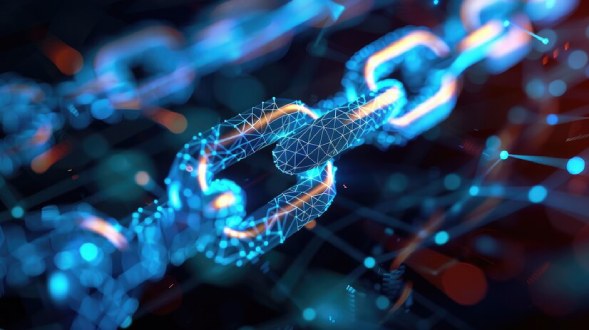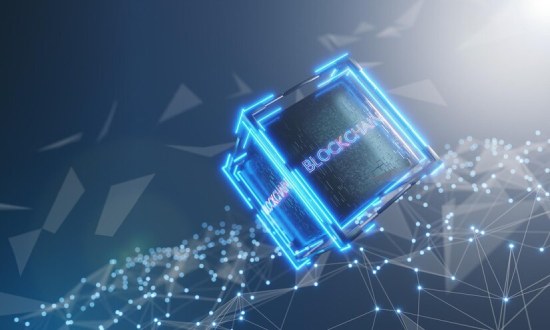-
Introduction to Real World Asset (RWA) Tokenization
Enterprises in 2025 are waking up to a quiet revolution, real-world assets (RWAs) tokenization. From real estate and private equity to carbon credits and fine art, traditionally illiquid assets are being digitized, fractionalized, and traded on blockchain networks. This evolution isn't just technical, it's strategic. Tokenization is reshaping how businesses raise capital, manage ownership, and scale operations across global markets.
At its core, RWA tokenization enables enterprises to bring tangible or intangible assets onto the blockchain in the form of digital tokens, unlocking liquidity and enabling more secure, transparent, and borderless asset transactions.
Leverage our enterprise blockchain tokenization solutions to unlock asset liquidity.
What is Real World Asset Tokenization in Blockchain?
Real world Asset Tokenization is the process of converting ownership rights to an RWA (real-world asset) into a digital token on a blockchain. Each token represents a fraction or full ownership of the underlying asset. This creates a digital representation of an asset that can be traded and managed on a blockchain. These tokens can represent anything from real estate and art to commodities and intellectual property.
Why Real World Asset Tokenization is Gaining Momentum
- BlackRock launched a tokenized fund on Ethereum.
- UBS issued a $50M tokenized bond on a permissioned blockchain.
- HSBC and Citi are running PoCs on tokenized repo markets.
- Real estate developers in Dubai and Singapore are tokenizing property portfolios to raise capital faster.
What's driving this shift?
Liquidity Unlock: Converts illiquid assets into tradable digital units, enabling faster capital raises and quicker exit opportunities for enterprises.
Cost Efficiency: Eliminates middlemen like brokers and custodians, reducing transaction costs by up to 70% and streamlining settlement.
Compliance by Design: Embeds KYC/AML checks directly into smart contracts, cutting legal overhead and minimizing audit exposure.
Global Capital Access: Enables enterprises to tap into cross-border investment without relying on local financial intermediaries or infrastructure.
Interoperability: Connects seamlessly with DeFi protocols, allowing tokenized assets to be used for collateralized lending, staking, or yield generation—opening up entirely new revenue models.
Also Read | Citigroup collaborates with Ava Labs for tokenization PoC
How Real World Asset Tokenization Works: Step-by-Step.
Step 1: Asset Identification
Identify the asset to be tokenized, which could be a physical object like real estate or a digital asset like a patent.
Examples:
- Physical: Real estate, machinery, gold, artwork.
- Intangible: Bonds, carbon credits, intellectual property.
Key considerations:
- Legal ownership and documentation must be verifiable.
- Asset valuation must be independently confirmed.
- Jurisdictional constraints and regulatory boundaries should be assessed early.
Step 2: Token Development
Develop digital tokens that represent ownership or a stake in the asset
Key elements:
- Decide on token standard (ERC-20, ERC-721, ERC-1400 for compliance)
- Define token economics: total supply, value per token, ownership rights
- Configure rules (e.g., transfer restrictions, dividend distribution)
Technical Scope:
- Tokens are built on a public or permissioned blockchain (e.g., Ethereum, Polygon, Hyperledger).
- Metadata (asset details, ownership structure, compliance logic) is embedded on-chain or via secure oracles.
Step 3: Smart Contract Integration
Smart contracts automate execution, governance, and compliance rules tied to the asset.
Functionality includes:
- Automated dividend or rent distribution
- Real-time ownership verification and transfer
- On-chain compliance (KYC/AML enforcement, whitelisting, jurisdiction checks)
Enterprise Benefit:
Eliminates manual settlements, reduces fraud risk, and ensures consistent enforcement of business logic across all transactions.
Step 4: Token Issuance and Trading
The final step involves issuing the tokens to investors and enabling secondary market access (if permitted).
Options:
- Primary issuance: via private placement, STO platform, or whitelisted offering
- Secondary trading: on licensed digital asset exchanges, P2P platforms, or DEXs (if compliant)
These tokenized assets, often classified as digital securities, require listing on compliant platforms that support regulated secondary market activity.
Compliance note:
Every token must comply with securities law in its operating jurisdiction—this determines investor eligibility, holding limits, and transferability.
Also Read | Blockchain-Based Tokenization | A Guide to Essentials
Key Benefits of RWA Tokenization for Enterprises
Unlocking Liquidity for Illiquid Assets
Tokenization can significantly enhance the liquidity of traditionally illiquid assets like real estate, infrastructure,etc. By dividing assets into smaller, tradable units, it becomes easier to buy and sell portions of high-value tokenized assets.
Enabling Fractional Ownership and Global Access
Tokenization allows assets to be divided into smaller parts, enabling fractional ownership. This democratizes access to investment opportunities, allowing a broader range of investors to participate.
Cost Efficiency via Disintermediation
By eliminating banks, brokers, and clearing houses, blockchain drastically reduces transactional and administrative overhead. Enterprises save on fees, reduce time-to-market, and automate compliance using smart contracts, leading to leaner, faster, and more profitable operations
Security, Transparency, and Trust
Blockchain's immutable ledger ensures that all transactions are transparent and secure. This reduces the risk of fraud and enhances trust among investors.
Also Read | DeFi platforms for tokenizing real-world assets
Real-World Examples of RWA Tokenization
Tokenized Real Estate
Tokenization of real estate allows investors to purchase tokens representing shares in a property. This can be residential, commercial, or industrial property. For instance, a $10 million building can be divided into 1 million tokens worth $10 each, allowing more investors to participate.
Real Example:
RealT is a U.S.-based platform that tokenizes rental properties on the Ethereum blockchain. One of their properties in Detroit was tokenized into thousands of ERC-20 tokens, each costing as little as ~$50. Token holders receive daily rental income in stablecoins like USDC.
Art and Collectibles as Digital Assets
High-value art pieces can be converted into tokenized assets, enabling art enthusiasts to own fractions of a masterpiece. This makes art investment more accessible and liquid.
Real Example:
Masterworks is a New York-based platform that tokenizes blue-chip art. In 2021, they offered fractional ownership of Banksy's “Love is in the Air”, allowing retail investors to own a piece of the $12.9M painting. SEC-qualified offerings make it legally compliant in the U.S.Commodities like Gold and Oil
Physical commodities like gold, oil, and agricultural products can be tokenized, providing a digital method for trading and ownership. This can streamline the trading process and increase market efficiency.
Real Example:
Tether Gold (XAUT) represents ownership of physical gold stored in Swiss vaults. Each XAUT token represents one troy ounce of gold. It's a tradable ERC-20 token backed by audited reserves and is available on exchanges like Bitfinex and FTX.
Intellectual Property and Licensing Rights
Patents, copyrights, and trademarks can be tokenized, allowing creators to monetize their intellectual property more effectively and providing investors with a new asset class.
Real Example:
Royal.io, co-founded by DJ 3LAU, enables fans to invest in music royalties. In 2022, rapper Nas tokenized royalty rights for two songs—“Rare” and “Ultra Black.” Investors received tokens representing streaming royalties, distributed through blockchain-based smart contracts.
Enterprise-Level Challenges in RWA Tokenization
Regulatory Uncertainty Across Jurisdictions
The Problem:
The legal status of tokenized real-world assets (RWAs) is highly fragmented globally. A tokenized real estate might be classified as a security in the U.S., a utility in Switzerland, and completely unregulated in parts of Asia. Moreover, most regulatory bodies (e.g., SEC, ESMA, MAS) are still updating laws originally built for traditional instruments and not programmable assets on decentralized networks.Enterprise Implication:
Large enterprises like banks, real estate firms, or asset managers, must engage multiple legal jurisdictions, build country-specific compliance layers, and accept legal exposure during this transition phase. Even licensed platforms like Securitize or Tokeny must continuously adapt to evolving rules.What Enterprises Must Do:
- Conduct jurisdictional legal analysis before issuing any RWA token.
- Implement multi-jurisdiction KYC/AML pipelines with modular compliance logic.
- Structure offerings under exemptions (Reg D, Reg S, MiFID II) to reduce exposure.
- Prepare for token recall mechanisms to meet regulatory demands if needed.
Technical Infrastructure and Blockchain Scalability
The Problem:
Most blockchains were not designed for enterprise-grade performance. Ethereum, while popular, faces throughput limits and high gas volatility. Alternatives like Solana offer speed but less institutional adoption. L1s like Avalanche or Algorand promise scalability but require custom tooling and deep technical teams. Enterprises also face issues integrating these platforms into legacy IT stacks, including ERP, CRMs, or custodial systems.Enterprise Implication:
Enterprises that fail to choose the right blockchain architecture risk costly migrations, poor user experience (high fees, delays), and operational downtime. Moreover, building compliance, off-chain data integration, and auditability on these platforms adds further complexity.What Enterprises Must Do:
- Choose chains based on regulatory alignment, throughput, uptime, and developer ecosystem.
- Use Layer 2 scaling (e.g., Arbitrum, zkSync) if cost and speed are barriers.
- Implement oracles and data bridges carefully, these are common attack surfaces.
- Build tokenization logic to support upgradability and modular compliance logic.
Institutional Trust and Market Adoption
The Problem:
The enterprise finance ecosystem runs on trust: ratings, custodians, brokers, and legal enforceability. Tokenized assets, however, challenge those norms. Without established benchmarks, historical data, or accepted valuation models, institutional players are reluctant to onboard RWA tokens.Enterprise Implication:
Lack of trust means low liquidity, poor asset pricing, and no standardized exit options. Token holders may be left with illiquid assets. Institutions fear the reputational and compliance risk of touching on-chain assets, even if the underlying value is real.What Enterprises Must Do:
- Collaborate with regulated custodians (e.g., Anchorage, Fireblocks).
- Partner with regulated digital securities exchanges (e.g., INX, tZERO).
- Adopt token issuance standards like ERC-3643 (used for permissioned tokens).
- Build secondary market access plans from day one. No liquidity = no value.
Security Risks in dApps and Token Platforms
The Problem:
Blockchain is secure. But the surrounding components, smart contracts, wallets, bridges, dApps are attack-prone. Between 2021–2024, over $4 billion was lost in DeFi and tokenization platform exploits (e.g., Wormhole, Ronin, Nomad Bridge). Enterprises building or relying on such infrastructure must understand they're deploying capital across a potentially compromised stack.Enterprise Implication:
Any security breach can result in irreversible loss of funds, regulatory scrutiny, or legal exposure. Enterprises cannot rely on open-source code or unaudited contracts when managing tokenized RWAs. One misconfigured contract could mean loss of investor trust, legal challenges, or asset freeze.What Enterprises Must Do:
- Require third-party smart contract audits from top-tier firms (e.g., OpenZeppelin, Trail of Bits).
- Implement multi-signature wallets, transaction approval workflows, and role-based access control.
- Ensure cold storage or MPC (multi-party computation) for institutional custody.
- Regularly monitor on-chain activity and transaction anomalies using tools like Forta or Chainalysis.
Also Read | Real estate asset management
The Future of RWA Tokenization: Trends and Opportunities
Integration with DeFi Ecosystems
Tokenized RWAs are becoming critical bridges between traditional finance and decentralized finance (DeFi). By representing assets like tokenized real estate, bonds, or invoices on-chain, these tokens can be used as collateral for lending, yield farming, or liquidity provision on DeFi protocols.
Enterprise Opportunity:
Firms can monetize idle or illiquid assets by plugging them into on-chain money markets. For example, tokenized T-Bills are now used in protocols like Ondo Finance and Mountain Protocol to generate DeFi-native yield. This opens up new revenue streams, without requiring a full transition away from traditional systems.24/7 Global Financial Markets
Unlike legacy financial systems bound by working hours, clearing cycles, and geographic limitations, tokenized assets can be traded around the clock on-chain—without delays or intermediaries.
Enterprise Opportunity:
This enables faster capital deployment, real-time settlements, and global investor participation. Enterprises issuing tokenized bonds or equity can access liquidity continuously, allowing more dynamic financing strategies, especially for startups, real estate, and fund managers operating across time zones.Cross-Border Transactions and Interoperability
Tokenization removes many frictions in international asset transfers. With interoperable protocols (e.g., Chainlink CCIP, LayerZero), RWA tokens can move across chains and jurisdictions securely, reducing the need for costly intermediaries or SWIFT-based transfers.
Enterprise Opportunity:
Multinational firms and financial institutions can issue, manage, and trade tokenized assets across borders in real-time with programmable compliance logic built-in. This reduces FX conversion costs, settlement delays, and regulatory exposure, key for global real estate, logistics, or energy companies.The Rise of Institutional Tokenization Platforms
Major players like BlackRock, JPMorgan (Onyx), Franklin Templeton, and Goldman Sachs (GS DAP) are developing compliant tokenization infrastructure for institutions. These platforms support KYC/AML, real-world asset anchoring, and integration with existing market structures.
Enterprise Opportunity:
Enterprises can now issue, distribute, and manage tokenized securities with institutional-grade custody, compliance, and reporting—without building from scratch. This accelerates time-to-market and de-risks tokenization initiatives. Strategic collaboration with these platforms positions enterprises at the center of the tokenized economy's next growth wave.Is Your Enterprise Ready for Asset Tokenization?
Key Takeaways
- Blockchain Tokenization is enterprise-ready. Leading institutions are actively digitizing real-world assets…tokenized real estate, debt, and funds.
- It opens new capital pathways. 24/7 global trading, fractional ownership, and DeFi integration drive faster, borderless fundraising.
- Challenges are solvable. With the right partner, regulatory and technical barriers can be navigated efficiently.
- Market momentum is real. BlackRock, JPMorgan, and Goldman Sachs are scaling real-world asset tokenization, this isn't theory anymore.
- Tokenized assets unlock liquidity. Enterprises can convert traditionally illiquid holdings into instantly tradable digital units, enabling faster capital deployment and broader investor access.
- Fractional ownership transforms access. Tokenized assets allow investors to own slices of high-value real-world assets, like commercial real estate or private credit—reducing entry barriers and unlocking diversified capital inflows.
Start Smart with Oodles Blockchain
At Oodles Blockchain, we specialize in helping enterprises launch secure, compliant, and scalable asset tokenization platforms.
Book a free 30-minute strategy session and get:
- Tech and compliance readiness assessment
- Tailored use-case roadmap for your asset type
- Deployment strategy using leading blockchain protocols
- Insights on DeFi integration, custodial solutions, and investor access
Don't just explore tokenization. Lead it.
👉 Talk to our blockchain expertsBuilt for enterprises. Backed by experience. Powered by Oodles Blockchain.
FAQs: Real-World Asset Tokenization
How does Qubetics' real-world asset tokenization work?
Qubetics turns physical or intangible assets into blockchain-based tokens. Assets are verified, legal rights are mapped, and smart contracts handle ownership, compliance, and transfers. The result: secure, tradable tokens that represent real-world value.
How does real-world asset tokenization work?
It's the process of creating blockchain tokens that represent ownership of real assets like property, gold, or debt. These tokens can be traded, split into fractions, and used in digital finance without needing traditional intermediaries.
How does Qubetics' real-world asset tokenization marketplace work?
Qubetics provides a platform where verified assets are tokenized and listed. Investors can buy fractions of these assets, track performance, and trade in compliant secondary markets, all on-chain.
What makes Qubetics' tokenization marketplace unique?
It's fully integrated , legal, technical, compliance, and trading in one place. No third-party patchwork. It also supports multiple asset types and is built for enterprise use at scale.
Who are the top companies in real-world asset tokenization?
Some leaders include BlackRock, JPMorgan, Franklin Templeton, RealT, and Securitize. Qubetics is building on that momentum with a purpose-built marketplace for enterprises.
What is the impact of Mavryk's $5M funding on real-world asset tokenization?
It adds credibility to the space. Mavryk's raise shows investors are backing tokenized assets as a serious financial model, not just a trend. It also fuels more tools and infrastructure for the industry.

Our Offices
INDIA
Emaar Digital Greens, Sector 61,
Gurugram, Haryana
122011.
Welldone Tech Park,
Sector 48, Sohna road,
Gurugram, Haryana
122018.















